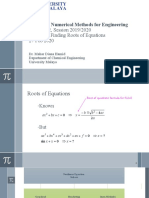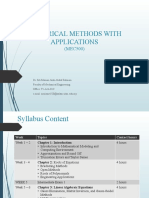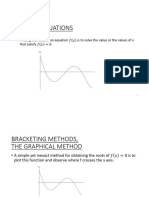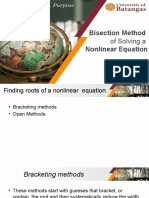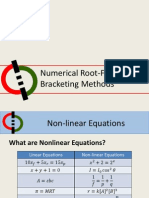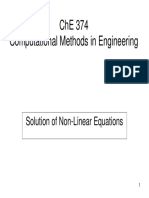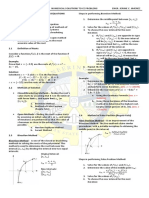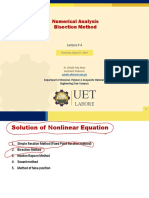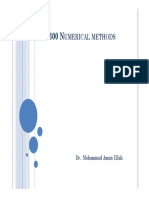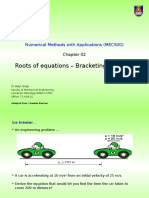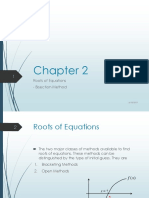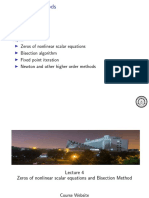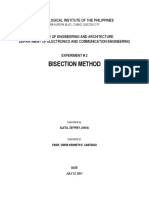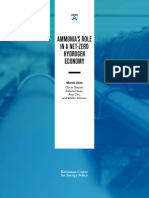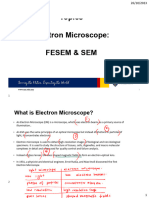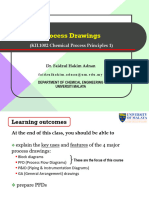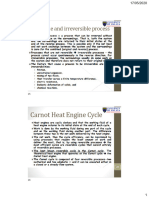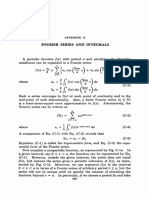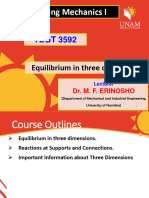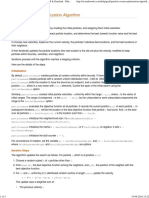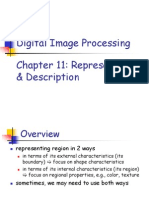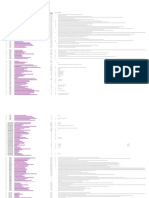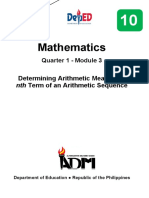0% found this document useful (0 votes)
60 views12 pagesLecture 2
This document provides an overview of numerical methods for finding roots of equations. It discusses root finding using the quadratic formula for quadratic equations. For higher-order polynomials and transcendental equations, iterative methods like graphical, bracketing, and open methods are required. Bracketing methods like bisection, false position and secant are described, which require initial guesses that bracket the root. The bisection method is explained in detail, involving iteratively bisecting the interval and checking for convergence based on a tolerance. Examples are provided to illustrate applying these root finding methods.
Uploaded by
haqeemifarhanCopyright
© © All Rights Reserved
We take content rights seriously. If you suspect this is your content, claim it here.
Available Formats
Download as PDF, TXT or read online on Scribd
0% found this document useful (0 votes)
60 views12 pagesLecture 2
This document provides an overview of numerical methods for finding roots of equations. It discusses root finding using the quadratic formula for quadratic equations. For higher-order polynomials and transcendental equations, iterative methods like graphical, bracketing, and open methods are required. Bracketing methods like bisection, false position and secant are described, which require initial guesses that bracket the root. The bisection method is explained in detail, involving iteratively bisecting the interval and checking for convergence based on a tolerance. Examples are provided to illustrate applying these root finding methods.
Uploaded by
haqeemifarhanCopyright
© © All Rights Reserved
We take content rights seriously. If you suspect this is your content, claim it here.
Available Formats
Download as PDF, TXT or read online on Scribd
/ 12

